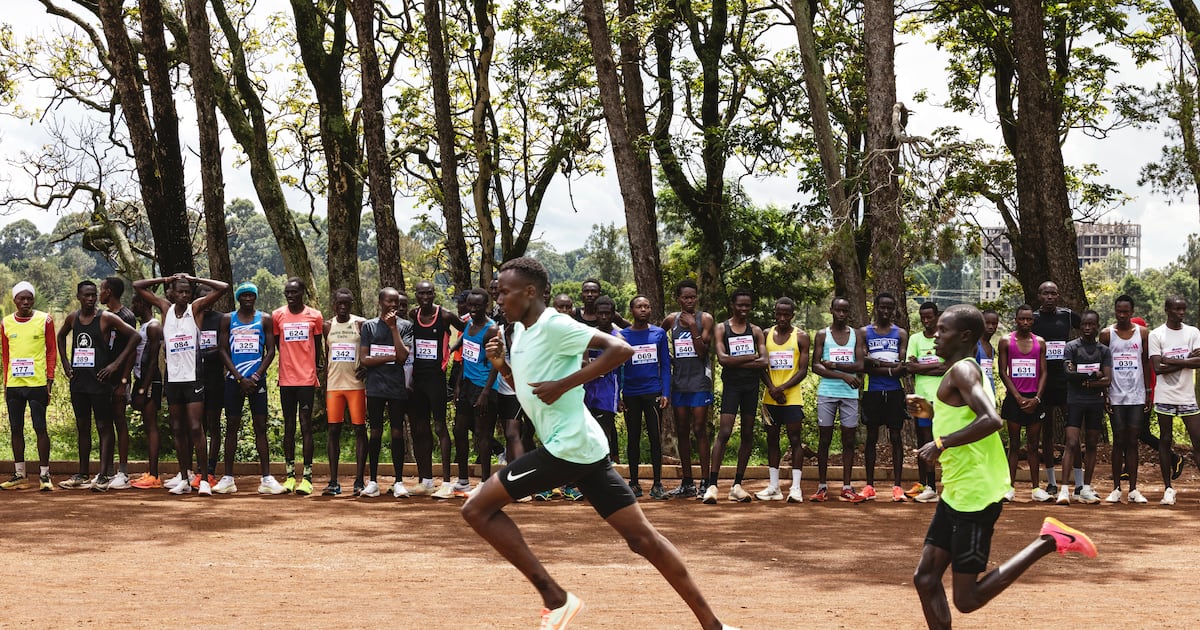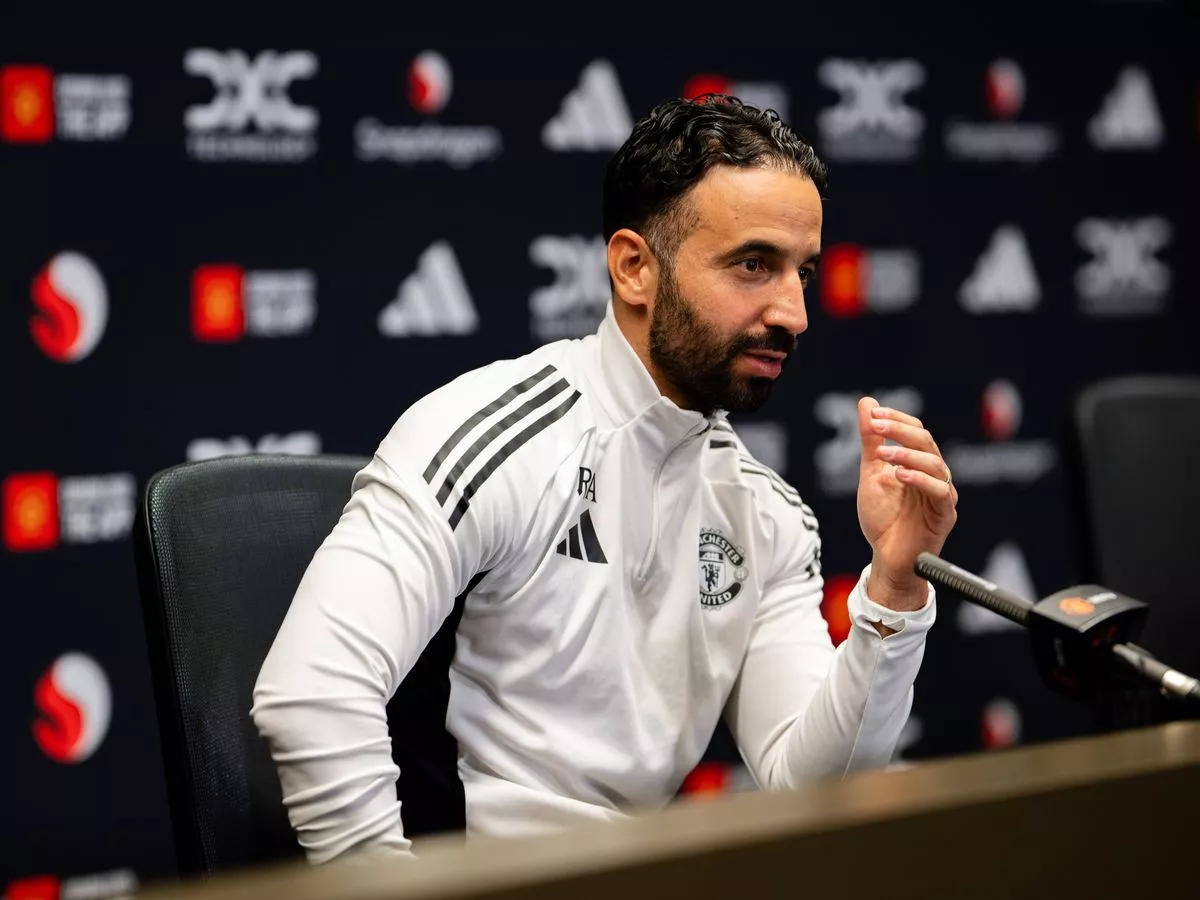
ELDORET, Kenya – The runners came from across Kenya, lured by the top prize in the 3,000 meters: the chance to move to the United States and compete for a leading American college. Organizers advertised the race as “The Golden Ticket.”
On loudspeakers at the edge of the dirt track, announcers listed the schools that were looking for Kenyans.
“The University of Alabama, the University of Arizona, the University of New Mexico …” echoed over jangly Kenyan pop music.
News of the time trial swept through this capital of long-distance running. Even as academic scholarships and student visas have come under attack by the Trump administration, college running was one path to the United States that had expanded.
The recruiting drive in East Africa is changing the face of college athletics. Last season, Kenyan women took the top three places in the NCAA cross-country championships. And Texas Tech recruited 28-year-old Solomon Kipchoge, another Kenyan whose half-marathon time was faster than the American record when he enrolled as a freshman.
Now it was Dismas Kiprotich and Kelvin Kiptoo’s turn. They stretched in the grass next to the track, all sinew and muscle, neither of them over 140 pounds, waiting for their heats.
In the lead-up to the trials, Kiprotich, 24, fixated on the qualifying time – 8 minutes and 12 seconds – and how quickly he would need to run each lap. Kiptoo, 20, tried to imagine his body whipping around the final turn, his phone ringing with calls from interested American coaches after he crossed the finish line.
No one had told them about the changes to NCAA regulations that brought about the recruiting surge. Or the way recruiters had found work-arounds to U.S. visa blockages. What the two runners knew was that a slew of agents – paid by U.S. coaches – had rushed to rural Kenya to organize this event.
And they knew how fast they had to run to get to America.
“It’s all I think about,” Kiprotich said.
“Everything I do, every workout, is about getting the scholarship,” Kiptoo said.
Some of the men in their heats had been running semiprofessionally for years. Some were teenagers in borrowed spikes. Some were suspected of taking performance-enhancing drugs, according to coaches and athletes, a growing threat to the integrity of the trials as they became bitterly competitive.
As the first runners lined up, coaches back in the U.S. were preparing for the results to appear on their screens. They had watched their counterparts in football and basketball programs invest millions in recruiting, as college sports came to approximate the pros. They believed funding time trials in East Africa (colleges pay the recruiters who organize the trials) was the running equivalent of a scouting trip to see a 17-year-old quarterback in Florida.
“If I’m going to compete against those really top teams in my conference, I’ve got to go find other countries and other places to find athletes,” said Jon Murray, head coach at Texas Tech, which helps fund the time trials.
The starter’s pistol went off for the first heat and Kiprotich bolted, running the first lap in just over 60 seconds, on pace for a time that would have won the U.S. national championships last year.
“Damn, that’s fast,” said one of the Kenyan recruiters holding a stopwatch.
A faint grimace appeared on Kiprotich’s face, slightly earlier in the race than it normally did. It wasn’t just the pace. It was the stakes. If he could run fast enough today, he could change the lives of his entire family, generations of poverty disrupted by a single race of less than two miles.
The young athletes had grown up in the shadow of some of the world’s top runners. Eliud Kipchoge, considered the greatest marathoner in history, trained a few miles from here. So did Faith Kipyegon, who broke the 1,500-meter world record this year.
Those runners are Kenyan national heroes. They are also owners of the best real estate and nicest cars in the Kenyan highlands, where the average salary is about $6 per day. Many young runners see the sport as a path to financial success.
But aside from a handful of top athletes, it’s nearly impossible to eke out a livelihood from professional running. Many contracts – typically with American and European shoe companies – offer $10,000 a year and don’t cover all expenses. Major marathons often pay travel costs, but prize money is limited. The 10th-place finisher in the Boston Marathon earns $5,500.
Running for an American university, however, has become more lucrative. Some scholarships offer stipends that go beyond covering tuition, room and board. Following a Supreme Court ruling, the NCAA in 2021 began allowing athletes to sign NIL (Name, Image and Likeness) deals that could be worth as much as full-time runners earn.
The NCAA declined to comment on the practice of recruiting Kenyan athletes, who in some cases are significantly older than American freshmen and whose academic qualifications are sometimes questionable compared with other student-athletes, even according to their own coaches. Schools that field athletes from the Kenyan time trials argue that they are following NCAA guidelines, and that in most cases, student-athletes are able to keep up with university coursework.
Other coaches disagree.
“It’s athlete trafficking,” said Rita Gary, a track and cross-country coach at Furman University in Greenville, South Carolina. “We’re going to look up in 10 years and the talent pool of American runners is going to be drained.”
When Simon Stuetzel, a leading agent, started recruiting Kenyan athletes, he created a spreadsheet to send to them showing how they could earn as much as $110,000 over four years as a student-athlete. “Money in your pocket,” he labeled the document.
Stuetzel had moved from Germany to run for Queens University of Charlotte. As a foreigner in the NCAA system, he felt like an anthropologist, marveling at how it was more profitable to be a college runner than a professional one.
“That was the seed of the idea,” he said.
In 2009, not long after moving to Charlotte, Stuetzel created Scholarbook, a company that initially focused on recruiting European runners for U.S. colleges. By 2022, Stuetzel was recruiting most of his all-Americans from Kenya and Nigeria.
Stuetzel learned that the NCAA doesn’t technically have an age limit. He learned that runners who had competed professionally could in some cases still be eligible. When many universities dropped their standardized testing requirements during the covid pandemic, any Kenyan student with a D average became recruitable.
Even before the Trump administration tightened student visa requirements, Stuetzel learned that the process varied dramatically across U.S. embassies. In Nairobi, athletes were almost uniformly denied without explanation, so Stuetzel started flying recruits to other countries – Poland, Madagascar and South Africa, for example – where they ran local races and where their U.S. visas were approved.
“Every visa adjudication is a national security decision,” said a State Department spokesperson in response to a question about inconsistencies between embassies. This month, the State Department reversed its policy allowing athletes to apply for visas outside of their home countries, potentially complicating Scholarbook’s pipeline. The State Department didn’t say why the policy was changed.
To find top Kenyan runners, Stuetzel promoted the time trials widely. He honed his pitch about the financial incentives of a college scholarship. Still, he was shocked by the talent that arrived. In 2022, he recruited Doris Lemngole, who ended up at the University of Alabama. Within two years, she had won both track and cross-country national titles.
“I was running professionally in Kenya when Alabama reached out through Scholarbook,” Lemngole recalled. “They said, ‘We’ll support you. We’ll do everything for you.’”
Alabama’s assistant track coach Nick Stenuf praised Lemngole, who has an A average and is eyeing the world championships as she enters her junior year. She is now sponsored by On, the Swiss shoe company.
“It’s runners like Doris who help us build a pipeline to Kenya,” he said. “Running is an international sport now at the NCAA level, and we have to recruit where we find talent.”
Last year alone, seven of Scholarbook’s Kenyan recruits were all-Americans, including Lemngole. Demand from top U.S. colleges coaches has spiked. Scholarbook increased its staff to more than 90 employees. Each university pays the company $30,000 per year for the recruiting service, according to Scholarbook.
Kiprotich grew up in a village in central Kenya, far from the country’s athletics circuit, a place where competitive running was an alien idea. Out of embarrassment, he trained before sunrise so no one would see him, hoping for a pro contract that would pluck him from his home. Then a friend of a friend told him about the scholarship program and the time trials in Eldoret.
Kiprotich borrowed enough money for the eight-hour bus ride. He rented a shared room on the edge of town, which he paid for by giving massages to other runners. He joined a small training group coached by Hugo van den Broek, a former professional runner from the Netherlands.
By January, after a series of injuries, Kiprotich got his 3,000-meter time down to 8:22, 10 seconds off the recruiting standard. Those times aren’t close to the top NCAA marks, but U.S. coaches believe the trials in Kenya can be more than 30 seconds slower because of poor track conditions, bad equipment and runners who have just begun training seriously. Many athletes, including Kiprotich, are wearing used shoes that don’t fit them.
The idea of buying new spikes was unimaginable. Kiprotich came from a family of farmers whose income was well below Kenya’s middle classes. If he didn’t get the U.S. scholarship, he would almost certainly end up back home, on the chicory fields with his father.
The Scholarbook time trials in May might be his last shot. He was 24. Even though there was no age limit in the NCAAs, he knew most schools would only recruit a 25-year-old if he was running world-class times.
Kiptoo, on the other hand, had seen the reality of professional running up close. His father, George Koech, ran professionally in the 2000s. He was based in Luxembourg, where he ran 800-meter races. His best time was 1:45, but he barely broke even financially. Koech said he believes he would have made more in Kenya as a potato farmer.
The scholarships offered another path for Kiptoo. After high school, he started following his dad’s training plan. He ran twice a day, more than 100 miles per week.
The hills around Eldoret were now full of athletes training for the college time trial. Kiptoo saw them during his morning runs. Some had already received scholarship offers – from Kentucky, Nebraska and Washington – and were waiting for their visas to come through.
His father told him that at the May time trial, if he ran a perfect race, Kiptoo would get the time he needed.
A few years before the college recruitment drive, it looked like performance-enhancing drugs might destroy Kenyan distance running. A string of professional athletes were suspended from the sport. In 2017, the International Olympic Committee threatened to ban the country from competition if it didn’t do more to address doping. The scandal has continued: In July, the women’s marathon world record holder, Ruth Chepngetich, was suspended for using hydrochlorothiazide, a banned substance. Chepngetich did not respond to a request for comment.
The idea that drugs could penetrate the scholarship trials had once seemed absurd. It was high-level professional runners who had been caught in the past. But as the college trials became more competitive, suspicions increased. Then came the doping violations.
In the past two years, two Kenyans competing in the NCAA – Caroline Jeptanui of Tulane and Tabitha Ngao of Texas Christian University – were provisionally suspended when it was revealed that they had evaded or missed drug tests before arriving in the U.S., according to Kenyan anti-doping officials. Both are appealing the judgments. The two athletes could not be reached for comment. Texas Christian did not respond to requests for comment. Tulane athletics officials said Jeptanui was no longer at the school.
“The cross country and track and field coaching staff were unaware of the confidential, provisional suspension during her recruitment and during her participation in our programs,” said Jason Corriher, Tulane’s associate athletic director, in a statement. “Upon learning of the suspension in late February, we promptly followed the findings of ADAK (Anti-Doping Agency of Kenya) and launched an internal review.”
The recruiting companies had not been aware of the missed tests, company representatives said. The tests were scheduled by the Kenyan anti-doping agency whose testing pool includes some scholarship athletes.
To critics, the scandals reflected a problem with the recruitment drive – and the enormous pressure it puts on young athletes.
“As US colleges go for the fastest Kenyan athletes, these cases will go up,” Aliphine Tuliamuk, a Kenyan-born runner who won the 2020 U.S. Olympic trials in the marathon, wrote on X.
Last year, a 20-year-old runner dropped dead at a scholarship time trial; the death is widely believed to be linked to doping. Ambulances are now stationed in the parking lot during the races.
U.S. coaches say they cannot force recruits to take drug tests as a part of their scouting efforts. But once athletes arrive in the U.S. they are subject to regular NCAA screening. Typically, coaches say, Kenyan runners take drugs to qualify for scholarships and then stop once arriving in the U.S. But if caught, their scholarships are typically rescinded.
“Twenty-five years ago, I would have laughed at you and said there is no way these people are doping. No way. But now I question it with almost everyone,” said Murray, the Texas Tech coach.
By the last lap of the race, Kiprotich’s stride had shortened. He swung his arms wildly and his face contorted. He was falling off the pace. Other runners passed him. He finished a distant 8:42.
“I just fell apart,” he said, between gasps.
His training partners tried to console him, but Kiprotich was unresponsive, peering in the distance at the runners in the second heat, who had begun their race. There was Kiptoo, relaxed in the middle of the pack.
Kiptoo’s father was on the sidelines, shifting his glance from his stopwatch to the track. Kiptoo was running slower than he needed to.
“Come on,” Koech said. “Come on. Come on.”
And then, in the last lap of the race, Kiptoo surged, taking the lead. The other runners, still stretching or warming up, stopped to watch.
Kiptoo hadn’t done any research on American universities. He knew it would be the recruiters who told him which university had made the best offer.
What he told himself was that any American university would be better than a life in rural Kenya, where you could have world-class times and still be a no-name. That’s what he said he was thinking, blasted by exhaustion, as he made the final turn on the dirt track, leading the field.
Koech clicked his stopwatch when his son crossed the line: 8:12. It was fast enough to qualify. The two men embraced.
The first call from the University of Iowa came less than an hour later.
“They said they would be eager for the boy to join them,” Koech said.
The next few weeks were a blur. Kiptoo increased his mileage in case the Iowa coaches wanted to see him race again. He waited to hear from Scholarbook or from the university or from anyone who might be able to tell him that he was indeed going to America.
But there was nothing. And then one of the Scholarbook agents called Koech. They had decided that Kiptoo should run somewhere else.
Middle Tennessee State was ready to make an offer. There were already five Kenyans on the track and cross-country team. One of them, Allan Kiplagat, had been the fastest freshman in the nation in cross-country last year. The team’s coach, Keith Vroman, liked that Kiptoo had good grades as well as competitive times on the track.
“I told Scholarbook, ‘I need one more guy to win my conference championship,’” he said. “I trust that they know what I’m looking for.”
Scholarbook booked Kiptoo a flight to Poland, where he would apply for a U.S. visa, skirting the more restrictive process in Kenya before the change in State Department policy. He typed “Tennessee” into Google and found it on a map.
“Murfreesboro,” he said, zooming in on the city where the college is located. “It looks interesting.”



